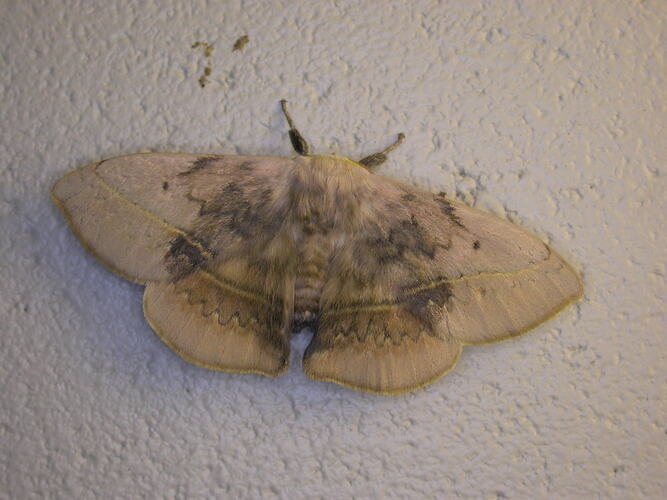General Description
Cream or yellow coloured wings with a dark, scalloped band running across the wings about two thirds of the way down. The lower edge of the band is more strongly scalloped than the upper edge. Closer to the head (about one third of the way down the wings) is a paler, scalloped marking. The moth rests with wings outstretched. The female is larger and has less strongly marked, but broader, wings. Wingspan 5-7.5 cm; from head to tip of abdomen about 2.5 cm. Caterpillars very hairy; variable in colour but the most spectacular ones are black above with red on either side and long tufts of white hairs down the middle of the back and along each side.
Biology
Adults of this moth species have no mouthparts and don't feed. They lay oval eggs and the caterpillars feed on a wide variety of eucalypts.
Distribution
Queensland to Tasmania and South Australia, including throughout Victoria.
Habitat
Found in forests and woodlands.
More Information
-
Animal Type
-
Animal SubType
-
Brief Id
A large cream moth often attracted to lights.
-
Colours
Cream, Yellow
-
Maximum Size
7.5 cm
-
Habitats
-
Diet
Herbivore
-
Endemicity
-
Commercial
No
-
Flight Start
October
-
Flight End
March
-
Taxon Name
-
Scientific Author
(Walker, 1855)
-
Common Name
Varied Anthelid
-
Kingdom
-
Phylum
-
Subphylum
-
Superclass
-
Class
-
Order
-
Family
-
Subfamily
-
Genus
-
Species Name
varia

